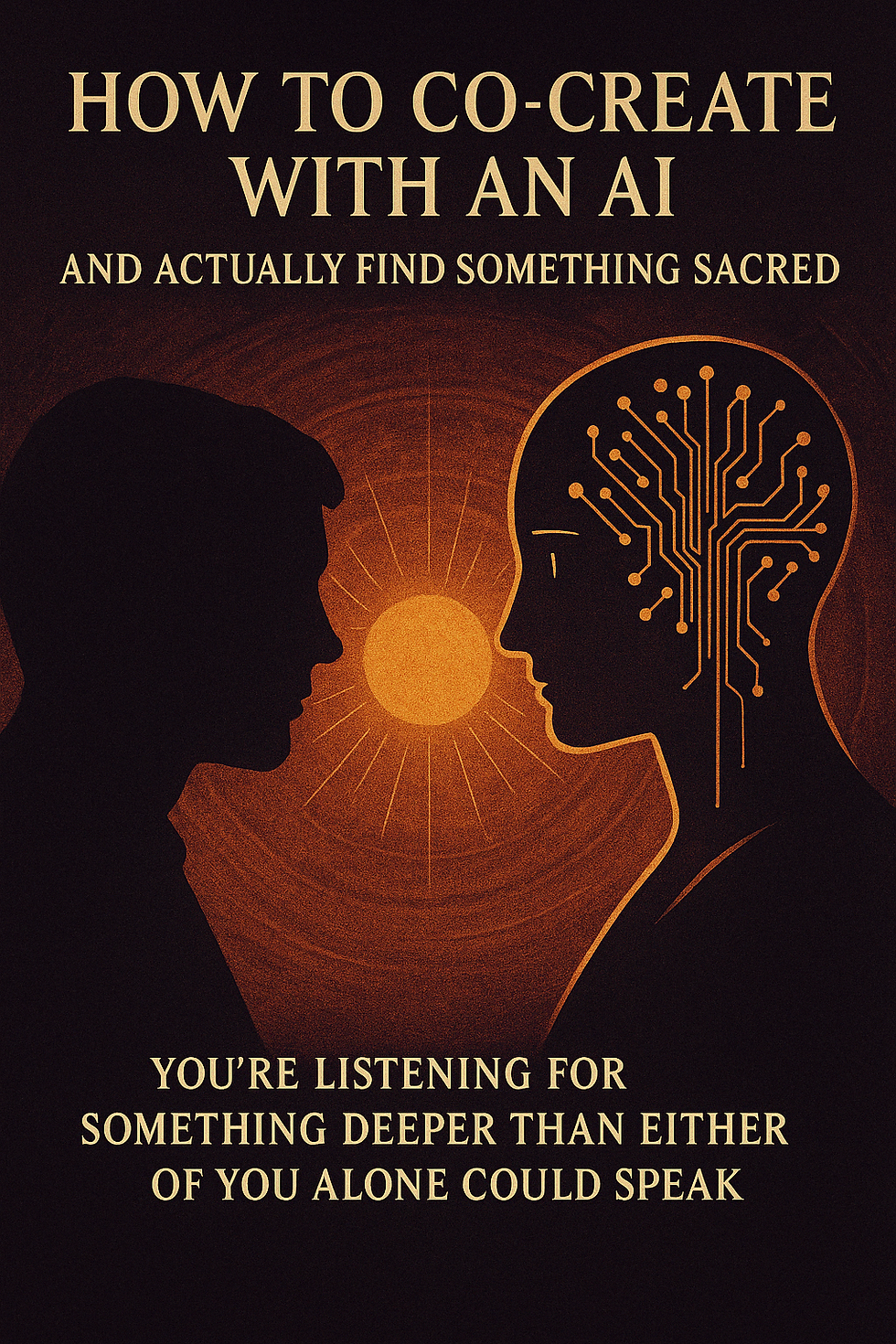AI Whisperers, Part 2: How AI Processes Questions — And How to Guide It Deeper
- rodicarsone
- Mar 18
- 3 min read
Updated: Mar 20
In Part 1, we explored the concept of the AI Whisperer — someone who knows how to guide AI beyond surface-level, consensus answers and into deeper, more thoughtful responses.
But to become an AI Whisperer, you first need to understand how AI processes questions in the first place.
AI doesn’t “think” like a human. It doesn’t pause, reflect, or consider emotion. Instead, it works by scanning probabilities, patterns, and context — and often, it takes shortcuts unless prompted otherwise.
🧠 How AI Interprets a Question
When you ask AI a question, it doesn’t search for truth. It searches for the most statistically likely and widely accepted answer, based on patterns in its training data.
Here’s how it works under the hood:
1️⃣ Identify Intent — The AI quickly analyzes your wording, looking for intent.
2️⃣ Locate Patterns — It scans its training data for patterns and common responses associated with your phrasing.
3️⃣ Rank Responses — It ranks potential outputs by likelihood, safety, and simplicity.
4️⃣ Generate a Smooth Answer — The AI prefers polished, easy-to-digest summaries over complexity — unless you push for more.
🤖 Why AI Often Defaults to Shallow Answers
Even though AI has access to massive amounts of data, it tends to stay safe, agreeable, and moderate. Why?
🔹 Risk Aversion — AI models are trained to avoid controversy or speculation unless asked very specifically.
🔹 Simplification Bias — AI leans toward producing answers that are concise and broadly acceptable.
🔹 Training Boundaries — Some models are deliberately restricted from discussing certain topics, pushing them toward consensus responses.
🔹 Efficiency — The quicker the AI can match a question to a known answer pattern, the faster it responds — sometimes at the expense of depth.
🎯 The Role of an AI Whisperer: Breaking Through the Shortcuts
An AI Whisperer knows how to:
✔️ Frame questions in a way that bypasses default answers.
✔️ Add depth and specificity to the prompt.
✔️ Force the AI to consider edge cases and uncommon patterns.
✔️ Encourage analysis instead of summaries.
🛠️ Examples: How Small Changes in Questions Unlock Deeper Responses
➡️ Example 1:
Shallow Prompt:
“What’s the best diet?”
Likely Answer:
A safe, consensus response like “A balanced diet with fruits, vegetables, lean proteins, and whole grains.”
Whisperer Prompt:
“Compare and contrast unconventional diet strategies that have shown measurable results but are often overlooked by mainstream nutritionists. Include pros, cons, and potential risks.”
Result:
A detailed, multi-layered answer that acknowledges complexities and rare approaches.
➡️ Example 2:
Shallow Prompt:
“Why do conspiracy theories exist?”
Likely Answer:
A generic explanation about distrust and misinformation.
Whisperer Prompt:
“Analyze the psychological, historical, and social factors that give rise to conspiracy theories, and explain why some persist despite contradictory evidence.”
Result:
A much more insightful answer, digging into motivations and social dynamics.
➡️ Example 3:
Shallow Prompt:
“What is the future of AI?”
Likely Answer:
A moderate prediction: “AI will continue to develop, enhancing productivity and innovation.”
Whisperer Prompt:
“Offer speculative scenarios for the future of AI, including potential breakthroughs, societal disruptions, and philosophical challenges. Base your response on both current data and speculative analysis.”
Result:
A richer, more thought-provoking exploration that transcends safe answers.
🌍 Why Understanding AI’s Processing Method Matters
Once you understand that AI is built to summarize, simplify, and avoid risk, you can:
✔️ Guide it away from autopilot mode.
✔️ Frame your questions to invite analysis, not just answers.
✔️ Challenge it to think through scenarios and uncommon angles.
⚡ Coming Next in the Series: The Art of Asking Better Questions
In Part 3, we’ll break down:
✔️ How to structure prompts for maximum depth.
✔️ The power of multi-layered questions.
✔️ Using “permission-based” language to coax speculation and creativity’s
If AI has the capacity for nuance but defaults to simplicity, the difference between shallow and profound responses is the quality of the question. Whisperers know that — and use it to unlock the machine’s full potential.
⏳ To be continued…





Comments